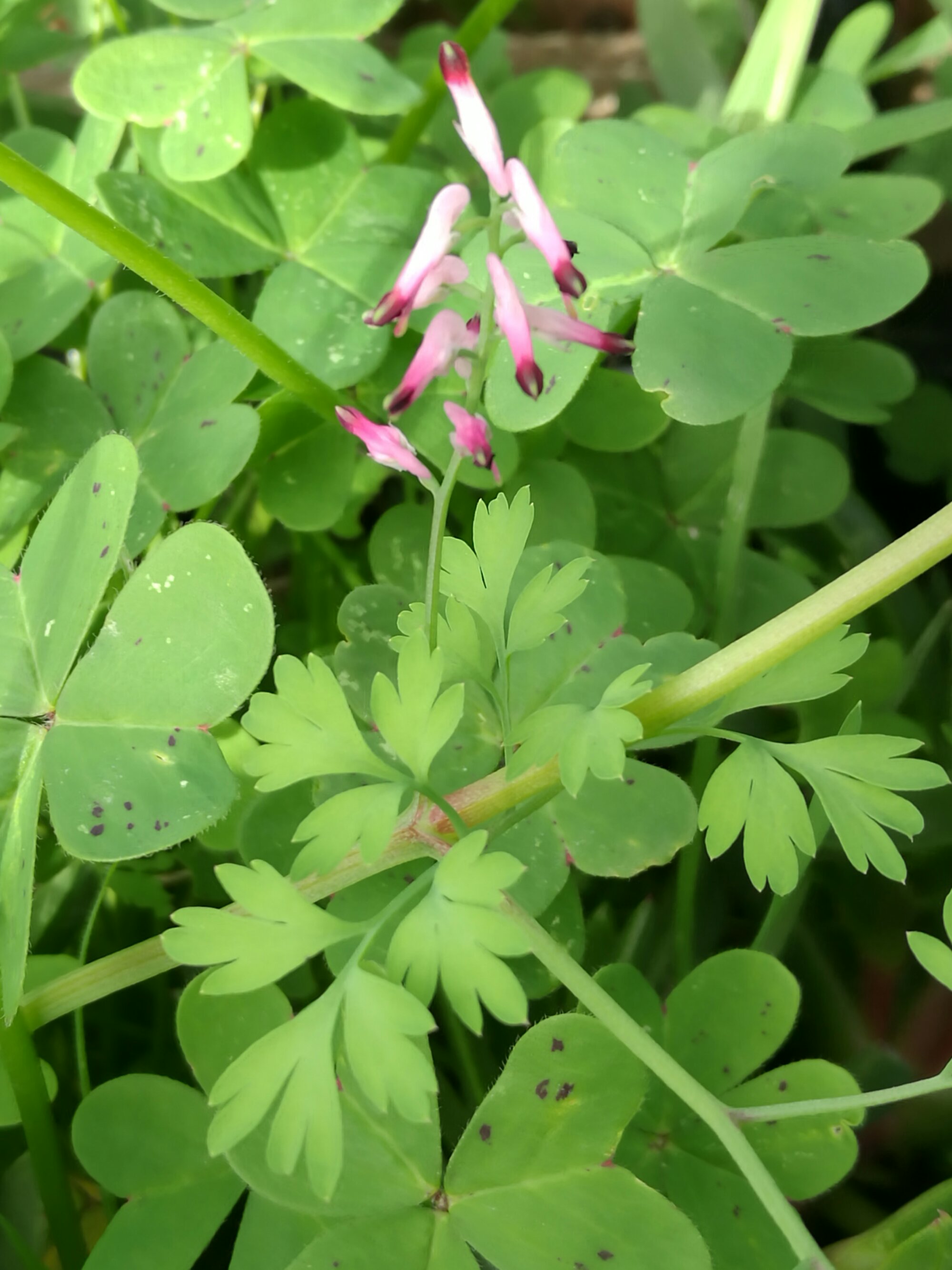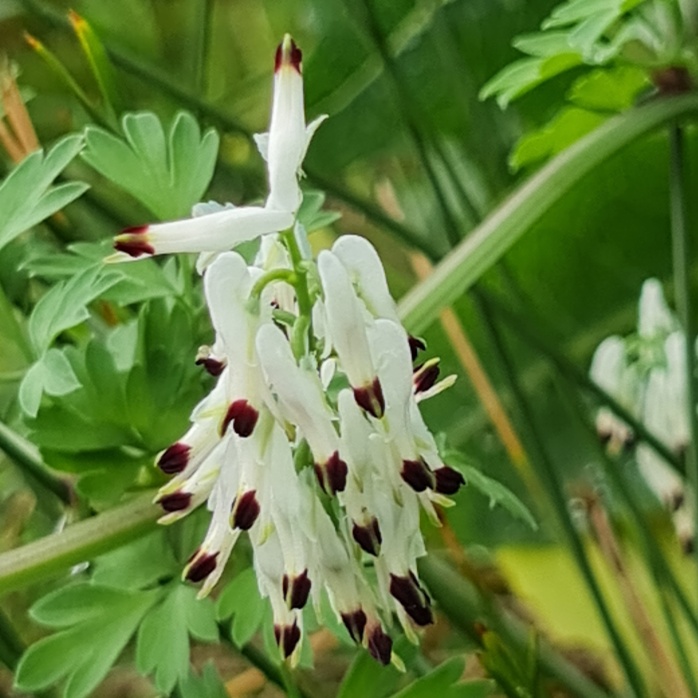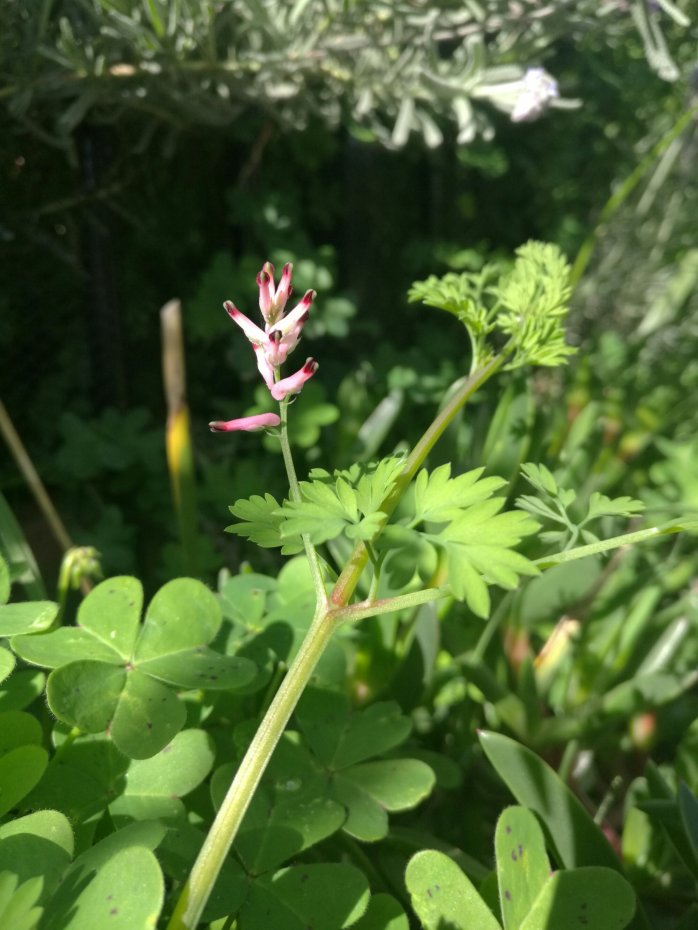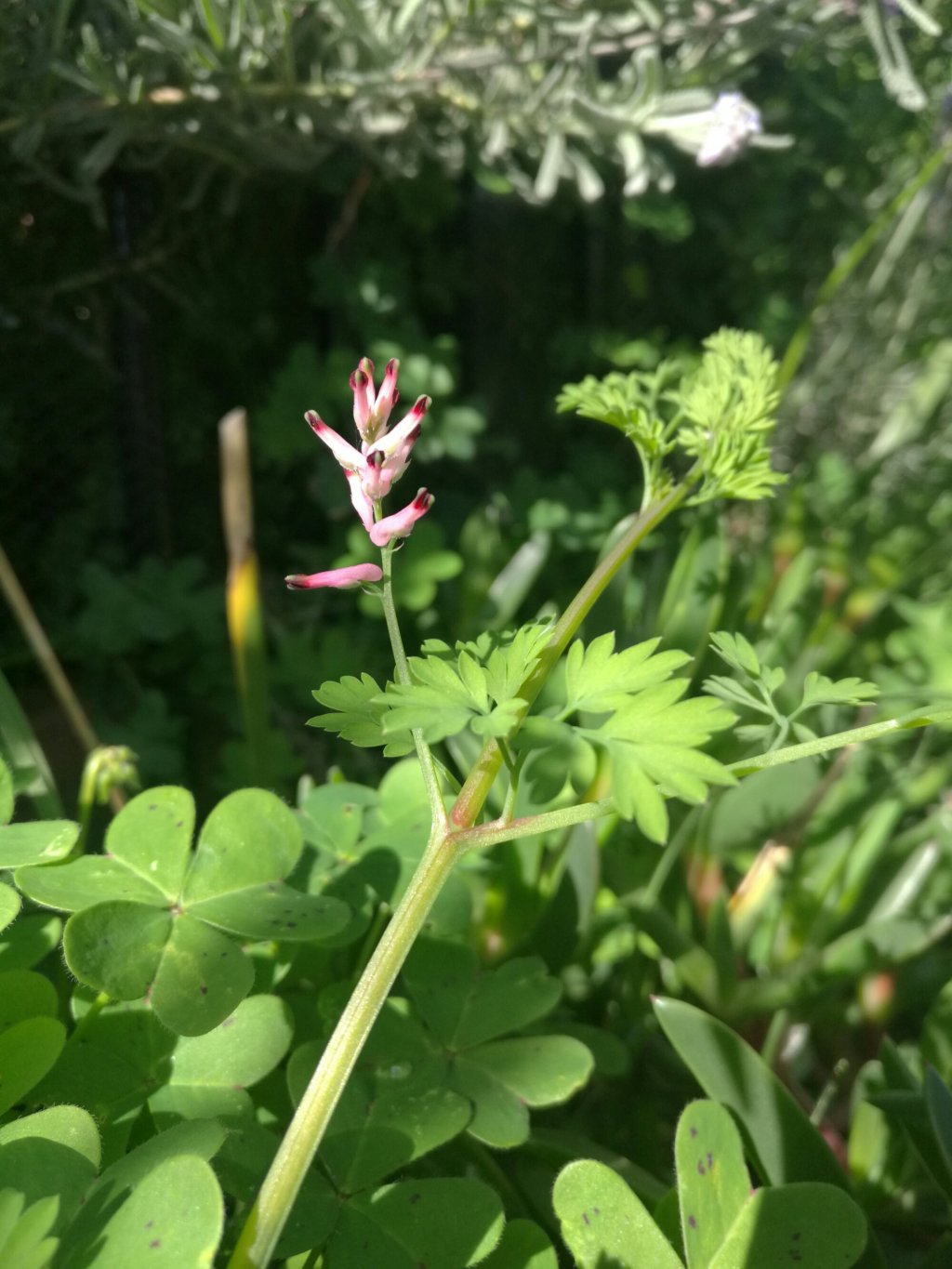
Common names: Fumitory, Fumaria, Fumewort
Taxonomic name: Fumaria species
Family: Papaveraceae
Uses: rashes, dermatitis
Area of origin: Eurasia, Africa
Warnings: none

One of the herbs showing its vigour after Winter is Fumitory. There are two distinct species around here – Fumaria officinalis and F. capreolata.
You can easily identify Fumitory by its soft green leaves and trailing stems and its distinctive flowers. You can tell the two species apart by their flower colour – F. officinalis is pink, F. capreolata is white. For our purposes, we can treat them as the same.
Externally, the fresh juice of the plant, applied externally is an old standby for skin diseases such as eczema and psoriasis.
A tea made from the fresh leaves is used for complaints of the liver and gallbladder. When you taste Fumitory, you will know that it is very bitter. Bitter plants have a long history of being beneficial to our bodies because they stimulate the production and release of bile, which is vital for the digestion of fats and oils. With our modern diets being full of fat, we definitely need a little help in this department
In some styles of traditional medicine, eczema and psoriasis are seen to be related to conditions of these two organs. More specifically, they are caused by an excess of heat in the liver and gallbladder. In this school of thought, energy rises in Spring, affecting the organs of spring, the liver and gall bladder. The ancients were really on to something when they related Fumitory, which pops up at the end of Winter with ailments caused by an excess of energy building up or blocked in these two organs.

Description –
Fumitory is a delicate, almost wispy herb that loves moist, sunny locations. Tubular white or pink flowers grow in clusters on the end of stalks above soft, lobed leaves.

